The Abandoned Mosque of Beliaghata
On Beliaghata Main Road, a little under a kilometre southeast of the point where the road crosses the canal lies a mysterious, abandoned mosque. #I say abandoned because the mosque is not used for prayers by Muslims anymore, although it is far from empty. What was once a mosque is now used as a residential building and storage space. I first found out about the abandoned mosque in Beliaghata from a Facebook post by my friend Avijit Das. Avijit and Souvik had been alerted to the presence of the mosque by another Facebook post. “Sayan Banerjee had posted about the mosque, claiming that it was the oldest mosque in Kolkata and that it was ASI property”, Souvik told me. But when they visited the site, they found it to be occupied by a Hindu family. Souvik was able to identify the family as Vaishnava based on the “kanthi” or wooden necklace that a male member of the family was wearing. The sheer ridiculousness of a Vaishnava family living inside a mosque was enough to pique my curiosity, and so I decided to do some investigation of my own.
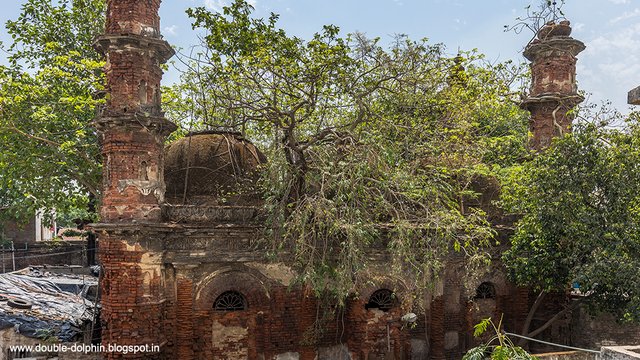
FIRST ENCOUNTER
**My first visit to the mosque in August of 2017, on a Wikipedia walk through the area led by fellow-bloggers Soham Chandra and Avijit Das. The mosque was in bad shape. It was clear that it had profuse stucco ornamentation at one point, but most of it had fallen off, exposing the bricks. The entire mosque and the area surrounding the mosque had turned into a slum and there were 7 shops, including jewellery shops operating from the area. But even in its present dilapidated state, it was easy to make certain estimates. The 3 domes of the mosque would indicate that this was a Sunni mosque since a Shia mosque would have domes numbering 5 or multiples of 5. The architectural style of the four minarets is of the “Dakhani” school of mosque architecture, as seen in the Tipu Sultan and Ghulam Mohammed Shah mosques. Since this style was only brought to Kolkata in 1800 after Tipu’s family was exiled to the city, it would be reasonable to suppose that this mosque was built after 1800.
But photographing the interiors of the mosque proved to be a challenge. The people occupying the mosque were extremely belligerent and while I got a couple of photos of the northern part of the mosque when senior blogger Rangan Datta ventured into the southern half, things almost came to blows. But in spite of the opposition, we did manage a few photographs. Rangan found the southern half of the mosque being used as a metal workshop and what looked like a tomb, or at least a raised platform inside the mosque. On the northern side, I found most of the space being used for storage and a marble plaque with what appeared to be Arabic writing – presumably a foundation stone. But the plaque was so dirty that while scholars could make out a few letters and numbers, reading entire sentences or even full words proved to be impossible. While I was sending photographs to my contacts and friends, hoping for some morsel of information from somewhere I made another trip to the area with Souvik and got some more photographs of the exteriors of the mosque from the rooftops of the surrounding buildings. But my inquiries about the mosque’s history were hitting dead ends until I approached Sabir Ahmed, a researcher with Amartya Sen’s organization Pratichi. “You know, there’s only one place to find information like this”, Sabir said, “the Waqf Board”.**
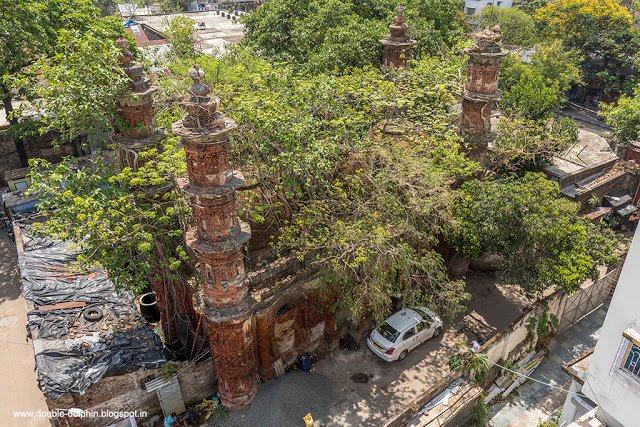
E.C. 2674
What is a Waqf, and what is the Waqf Board? According to the Waqf Act 1954, a waqf is “the permanent dedication by a person professing Islam, of any moveable or immovable property for any purpose recognized by the Muslim Law as religious, pious or charitable”. In very loose terms, a waqf for a Muslim is what a “devottar” property is for a Hindu. In both cases, the owner of the property is said to be God, and in both cases, the property cannot be sold. Each state has a Waqf Board to regulate and administer such properties. The offices of the Waqf Board on Madan Street certainly do not betray the fact that this organization controls such vast amounts of property across the state. Those of us who have lived in West Bengal long enough are used to the archetypal “government office”, typically housed in a century-old building that looks like it has never been repaired, cobwebs hanging in the corners, cats walking around – you get the picture. But within these walls, I was fortunate to find both complete cooperation and startling efficiency. In the vast, cavernous records room mountains of files were being slowly and painstakingly digitized. E.C. 2674 was the number of the file on the mosque I had seen, and it had been located and kept ready for me. While the file itself was 3-inches-thick, the 4 page summary at the top was enough for my purposes.
The structure I had photographed was a mosque established by Bibi Saulatunnesa, a resident of 6, Belighata Main Road. The mosque was part of a waqf estate established by her on 13th February 1908 and it would be reasonable to suppose that the mosque had been built around the same time. The usual custom when building a mosque is to provide for some means for its upkeep and the pay of its muezzin and Imam. This is why one finds shops attached to mosques – their rent pays for the maintenance and other expenses. In this case, Bibi Saulatunnesa had created an estate consisting on 15 cottahs of land in the area surrounding the mosque and a further 1837.5 bighas spread across various districts of the then undivided Bengal. After her death, the mosque remained under the stewardship of a certain Maulvi Mohammed Mujtaba, who was also a resident of 6, Belighata Main Road. However, Mujtaba regularly defaulted “in the submission of accounts and payment of waqf contribution”. Then in 1946, he shifted his residence from Beliaghata to Karaya Road and the following year became untraceable. It was assumed that he had moved to East Pakistan, and the board appointed Janab A.M. Ashraf in his stead. But why did Maulvi Mohammed Mujtaba shift from Beliaghata in north Kolkata to Karaya Road in central Kolkata, almost 7 kilometers southwest? The summary provides a typically clinical description – “in the wake of communal riots”. But that is a somewhat understated description for one of the most violent episodes in the history of Kolkata.
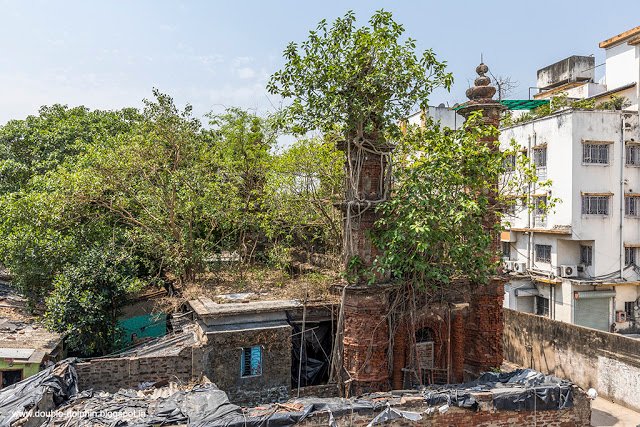
THE GREAT CALCUTTA KILLINGS
The roots of Great Calcutta Killings lay in the Cabinet Mission, a 3-member team which had been sent to India to finalize a transfer of power. The Cabinet Mission first proposed a plan of a united India, with Muslim and Hindu majority provinces in separate groups. While this was somewhat acceptable to the Muslim League, the Congress was uncomfortable with the idea because it would create a loose federation with a weak central government. The next proposal was for partition, with Hindu majority areas going to India and Muslim majority areas going to a new state of Pakistan, which the Congress completely vetoed. Panicking at the prospect of being 2nd class citizens in a country that had an overwhelming Hindu majority, Mohammed Ali Jinnah, the leader of the Muslim League announced 16th August, 1946 as Direct Action Day – a general strike by Muslim League supporters across all walks on life, to compel the colonial government to accede to their demands. In Bengal, the situation was precarious. Thanks to Muslims constituting 56% of the population in undivided Bengal, against 42% Hindus, Bengal was the only province where the Muslim league had formed the provincial government, led by the Prime Minister of Bengal, which was Huseyn Shaheed Suhrawardy in 1946. But this Muslim majority was concentrated in the east, while Kolkata, the provincial capital, had a 64% Hindu population and only 33% Muslim. The Chief Secretary in Bengal, R.L. Walker advised Prime Minister Suhrawardy to request Governor Sir Frederick Burrows to declare a public holiday on that day. Burrows agreed, in the hope that this would minimize the risk of conflict. The effect was quite the opposite
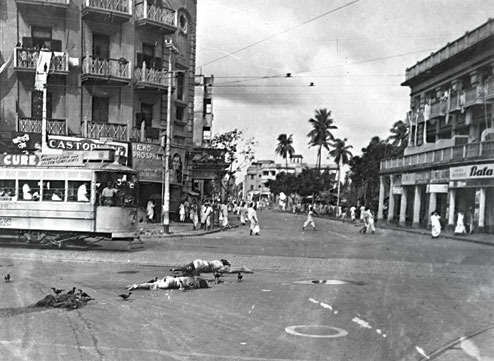
For what happened in Kolkata on the 16th of August, 1946, the sources are many and confusing. On the Indian side, the material has a decidedly pro-Hindu and pro-Congress bias. The opposite is true for sources from Pakistan and Bangladesh while the British are content to blame both sides equally. Customs Inspector August Peter Hansen writes, “On 16th August, in the morning from about 6.00 am, gatherings of Muslims, 200-400 strong and armed with lathis wended their way towards the Calcutta Maidan, marching like soldiers, four abreast. They gathered at the foot of the Ochterlony Monument. Fiery speeches were made, chiefly directed against the Hindus”. From this meeting Muslim League supporters went off into various parts of the city, as if to do battle, carrying giant paintings of Jinnah riding a white horse and brandishing a scimitar. “People showed signs of being intoxicated, whether with alcohol or enthusiasm”, remembers Syed Nazimuddin Hashim, then a student of Presidency College. But how did the violence begin? The accepted story is that the Maidan meeting was ground zero, but several other testimonies point in a different direction. Muslims League students had been raising the party flag at various colleges in Kolkata since early morning. In several places, this had been met with resistance. Among those raising the flag had been a young Sheikh Mujibur Rahman. When he raised the Muslim League flag in the Calcutta University premises at 7am, he faced no opposition, but “as soon as we had left the flag was lowered and shred into pieces”. There was greater opposition at Ripon College (now Surendranath College) later in the morning. By afternoon, according to a British military report, “Hindus started putting up barricades at Tala Bridge and Belgachia Bridge and other places to prevent Muslims processions coming into the town and Muslims goondas went round forcing Hindus to close their shops”. At 36 Harrison Road at his little eatery ‘East Bengal Cabin’, Nanda Lal watched in horror as “seven lorries came thundering down Harrison Road. Men armed with brickbats and bottles began leaping out of the lorries… they immediately fell to tearing up Hindu shops”. But the character of the rioters changed rapidly. The British authorities observed that although there had been heavy student involvement at the beginning of the disturbance, by late afternoon, “the persons involved on both sides were gwallahs, rickshaw pullers, teashop wallahs, pan berri wallahs, cart pullers, cartmen, goondas of the worst type”. Both victims and perpetrators on both sides were people from the poorer sections of society.
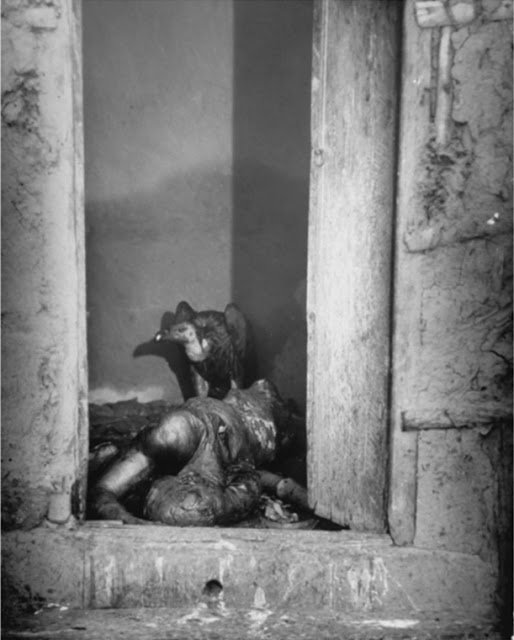
In north Kolkata, the Hindu mobs were led by the infamous Gopal Mukherjee, known as Gopal Patha or Gopal the goat, thanks to a goat meat shop he owned on College Street (which still exists). In Beliaghata, Hindu mobs were under the leadership of Jugal Chandra Ghosh who ran an “akhara” or wrestling club in the area. “There was this Congress party leader. He took me round Calcutta in his jeep. I saw many dead bodies, Hindu dead bodies. I told him, ‘Yes, there will be retaliation’” Ghosh told journalist and historian Andrew Whitehead in 1997. “I saw four trucks standing, all with dead bodies, piled at least three feet high; like molasses in a sack, they were stacked on the trucks, blood and brain oozing out... that sight had a tremendous effect on me”. And so, the order went out – 10 Muslims for every Hindu killed! 10 rupees for every murder, and 5 for every Muslim injured! In the lanes of north Kolkata and the slums of Miabagan, unprecedented savagery was unleashed. Children were burned alive, women were raped and bamboo poles were shoved into their wombs. Mobs stuffed butchered bodies down manholes which then got stuck in sewage pumping stations. Even then, the streets of Kolkata were littered with corpses. For 4 days, the bloodletting continued. Asok Mitra drove to Kolkata from Chandannagore with a Muslim friend whose wife was admitted to the School of Tropical Medicine. He found “maimed bodies, severed limbs, rotting corpses, looted shops and establishments all the way down from the Dunlop Bridge at Barrackpore onto Calcutta”. No community was innocent, and even Anglo Indians were seen participating in the looting of shops in New Market.
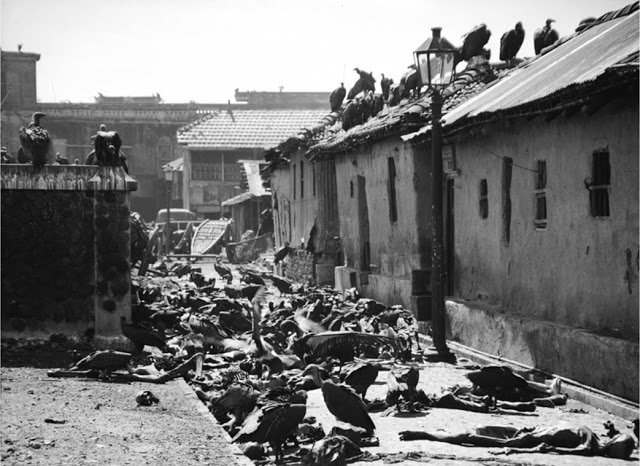
The number of victims varies depending on who you ask, but at least 5000 had been killed in the 4 days, at least 10,000 had been wounded and more than 100,000 had been rendered homeless. The casualties had been disproportionately larger on the Muslim side. In West Bengal even today, Suhrawardy is seen as the man responsible for the riots and is perceived as a villain, but latest revelations, including secret cabinet papers, made public recently reveal that it was the colonial administration's incompetence that was to blame. Suhrawardy is rumored to have had an army of toughs at his command, but to anyone familiar with politics in Bengal, this would come as no surprise. Even today, politicians are known to have harbour "goondas". By his own admission, Gopal Patha was close to Congress leader and future West Bengal Chief Minister, Bidhan Chandra Roy.
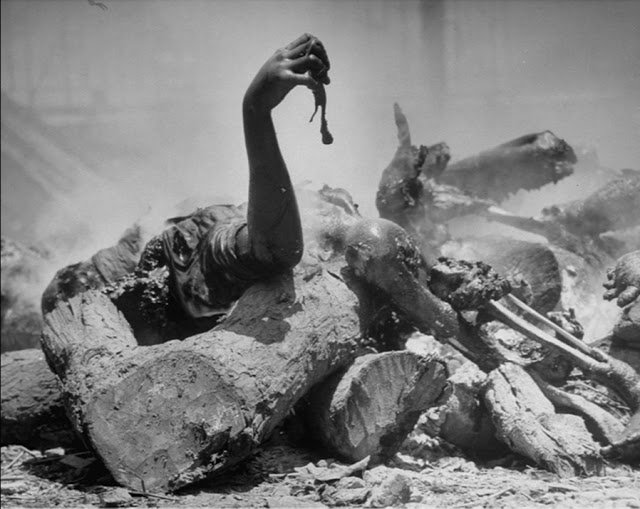
And yet, amidst all the carnage, there were a few good men who stood their ground. The Muslim proprietor of the Gulzar Shawl Repair Company disguised 9 girls of the besieged Hindu College in Burkhas and helped them escape to safety. A Hindu gentleman in Dinabandhu Lane gave shelter to 20 of his Muslim employees. Muslim cobblers saved the lives of Hindu tram workers in the Sealdah area. My own relatives lived, and continue to live in the Beliaghata area and family members say they had two Muslim servants, Khaleq and Muzaffar. They changed their names to Khagen and Madan and forbade them from stepping out of the house. But the confidence of the people had been shaken, and they sought safety in numbers. As the city’s minority Muslims moved to homogeneous neighbourhoods, Kolkata’s Muslim ghettos were born. These ghettoes still exist and Muslims find it hard to rent homes or buy property outside these areas. As families moved, they left behind their places of worship. Today, the 6 mosques on Ballygunge Circular Road, for instance, look very out of place since there are no Muslims living on Ballygunge Circular Road. But their presence is evidence of the fact that this was once a mixed neighbourhood.
A MOSQUE MAROONED
As a result of the “ghetto-isation” in the wake of the riots, the mosque in Beliaghata became deserted, with no more Muslim families left in the neighbourhood to offer prayers there. With partition came even more violence and an exchange of populations. The second round of rioting in Beliaghata was so bad that it needed Gandhi’s personal intervention and he stayed in the house of a Bohra Muslim family called Hyderi Manzil. His threats of a fast unto death ultimately brought the rioting mobs to a standstill and Jugal Chandra Ghosh surrendered his weapons to Gandhi at Hyderi Manzil. The building exists even today as is now known as Gandhi Bhavan and has been turned into a museum. The abandoned mosque came to be occupied by refugees from erstwhile East Pakistan. With much of the land that was to pay for the maintenance of the mosque lost either to vesting by the state government or ending up on the other side of the new international border, Ashraf now found it difficult to carry on his duties. He handed over power of attorney to a Goshtho Behari Roy, who was living inside the mosque at the time and became the defacto mutawalli or caretaker of the mosque. With all attempts by the Waqf Board to remove encroachers coming to naught thanks to non-cooperation by local authorities, ultimately the mosque was placed under the receivership of an advocate, Purna Chandra Ghosh. The legal battle to free the mosque of encroachments continued. By 2010, the Waqf Board had issued show cause notices to 28 officially listed encroachers. The municipality, however, lists only two occupants – N. C. Ghose and Goshtho Behari Dey. While most of the occupiers were happy to move provided they were given rehabilitation elsewhere, members of the Dey family claimed in court that they owned the portion of the property they lived in and had even rented it out to others. This is an absurd claim, since a Waqf property cannot be “owned” when ownership is already vested in God almighty.
-Read More- FROM MAIN SOURCE